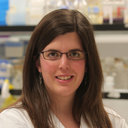Subcritical water extraction of nutraceuticals with antioxidant activity from oregano. Chemical and functional characterization.
Sleutelwoorden
Abstract
In the present work, oregano leaves (Origanum vulgare L.) are explored as natural source of nutraceuticals with antioxidant activity. To do this, subcritical water extraction (SWE), a new environmentally friendly technique, is employed as extraction procedure and HPLC coupled to DAD is used for the chemical characterization of the extracts. Moreover, the radical scavenging 1,1-diphenyl-2-picrylhydrazyl (DPPH) method and the determination of the total phenolic content (measured with the Folin test) are applied to evaluate the antioxidant activity of the extracts. The extraction of antioxidants from oregano leaves by SWE is studied considering different temperatures (25, 50, 100, 150 and 200 degrees C) to investigate the selectivity of the process. The highest antioxidant activity is observed for the extract obtained at the highest temperature, 200 degrees C (EC(50) equal to 10 microg/ml). Moreover, the extraction yield was also the highest (54% dry weight) at these extraction conditions. The total phenolic content showed no differences among the different extracts, concluding that the amount of phenolic compounds extracted was similar but the type and structure of the phenolics was different, providing in this way different antioxidant activity. Some compounds could be tentatively identified, proposing some probable chemical structures for some of them, such as flavanones, dihydroflavonols, favonols and flavones.


